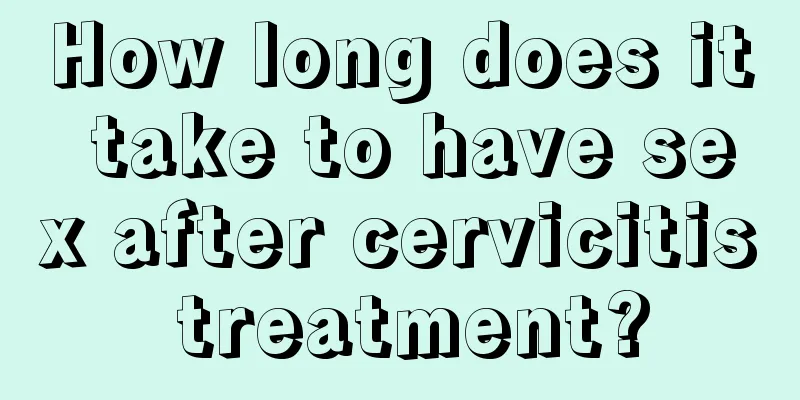What is the difference between hysteroscopy and curettage?

|
We all know that once an unexpected pregnancy occurs, an abortion must be done in time, otherwise the longer you delay the abortion, the more difficult it will be. Especially for female friends who choose medical abortion, there is a high possibility that the abortion will not be clean, and the result is that they have to go to the hospital for a curettage, which is really too painful. So the question is, what is the difference between hysteroscopy and curettage? Hysteroscopy is a new, minimally invasive gynecological diagnosis and treatment technology. It is a fiber-light endoscope used for intrauterine examination and treatment. It includes a hysteroscope, energy system, light system, perfusion system and imaging system. It uses the front part of the scope to enter the uterine cavity, which has a magnifying effect on the observed area. It has become the preferred examination method for gynecological hemorrhagic diseases and intrauterine lesions because of its intuitive and accurate nature. Hysteroscopy can not only determine the location, size, appearance and range of the lesions, but also make detailed observations of the tissue structure on the surface of the lesions. Dilation and curettage is a procedure in which the uterus is scraped and the endometrial tissue is collected. Depending on clinical needs, curettage can be a diagnostic or therapeutic procedure. Indications for hysteroscopy Abnormal uterine bleeding, menorrhagia, oligomenorrhea, irregular menstrual cycle, uterine fibroids, uterine polyps, displacement of IUD, infertility, habitual miscarriage, follow-up examinations after spontaneous or induced abortion, abnormal ultrasound images, long-term lower abdominal pain, artificial conception and preoperative evaluation of in vitro fertilization, etc. are all indications for hysteroscopy. Hysteroscopic technology can be used to directly examine lesions in the uterine cavity, locate and collect lesion tissue for examination. The diagnosis is accurate, timely, comprehensive and intuitive, and cancer can be detected early. Fallopian tube catheterization can be performed to check the patency of the fallopian tubes and clear blockages in the interstitial part of the fallopian tubes. It is accurate and effective. Hysteroscopic surgery can remove the endometrium, submucosal fibroids, endometrial polyps, uterine septum, intrauterine adhesions and foreign bodies. It has good efficacy, does not require laparotomy, has little trauma, less bleeding, less pain and quick recovery. The uterus is the "palace of the fetus" and the uterine cavity is the room where the fetus will live for ten months. Conception is easy only when the uterine cavity is normal. For example, there was an infertile woman who had failed artificial insemination and in vitro fertilization. A hysteroscopy revealed a fibroid in the uterine cavity. After the doctor performed a surgical hysteroscopy to remove it, she became pregnant naturally. A woman stopped getting pregnant after giving birth to her first child. She tried every treatment but to no avail. A hysteroscopy was performed, and two sutures from a previous caesarean section were found in her uterine cavity, as if she had an IUD. No wonder she was infertile. After the doctor performed a surgical hysteroscopy to remove the sutures, she became pregnant naturally and gave birth to a child. Therefore, hysteroscopy is a powerful tool for treating infertility. European and American infertility experts believe that all infertile patients should undergo hysteroscopy. The best time for hysteroscopy is from the end of menstruation to before ovulation. There is no need for anesthesia during the examination, so there is no need to fast or be hospitalized. You can go home after the examination. You don’t need to rest or take any supplements the next day. You can just go about your normal daily activities. |
<<: What happens when amniotic fluid embolism occurs after childbirth?
>>: What to do if you are pregnant with a sharp wetness
Recommend
Baby's first umbrella of protection - primitive reflexes
Reflex refers to the regular response of the body...
What causes bloating in early pregnancy?
After pregnancy, a woman's body will undergo ...
How to conceive with an anterior uterus
Generally, there are two main positions of a woma...
What is the cause of menopausal back pain
There are many parts of the female body that are ...
What are the yoga movements suitable for menstruation?
Many women will have many reactions when they hav...
Is it normal to have frequent fetal movements at 32 weeks of pregnancy?
For a pregnant mother, fetal movement is the most...
Are you feeling high or low? Are you on a roller coaster? You may be ill...
Expert of this article: Zhao Wei, deputy chief ph...
Why does the baby burp after feeding? How to burp the baby
It is common for newborns to hiccup after feeding...
What is the cause of occult blood in pregnant women's urine?
Urine occult blood is also called urine hidden bl...
What should I do if I have sex 10 days after IUD removal?
Nowadays, there are more and more ways to prevent...
What to do if your vagina is dry and itchy
In life, many people often feel that the vulva is...
The inner thighs are dark after giving birth
Many women will experience many changes in their ...
@Cancer patients: "If you keep a bit of stomach energy, you will have a bit of life"
On May 20, 2021, the 81st patient education live ...
Inflammation of the uterus
The uterus is an important part of the female rep...









